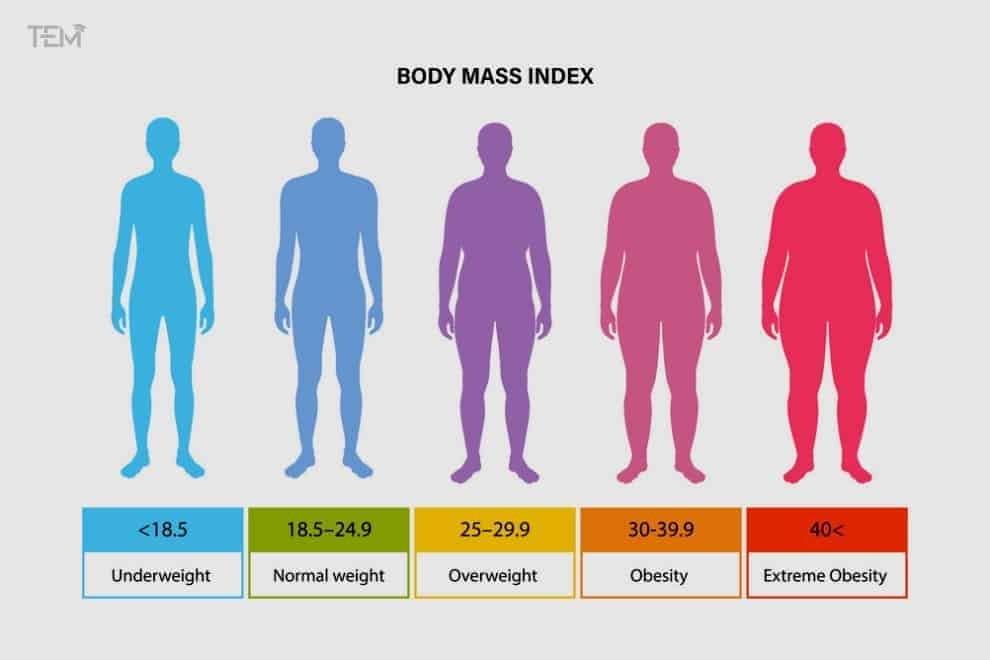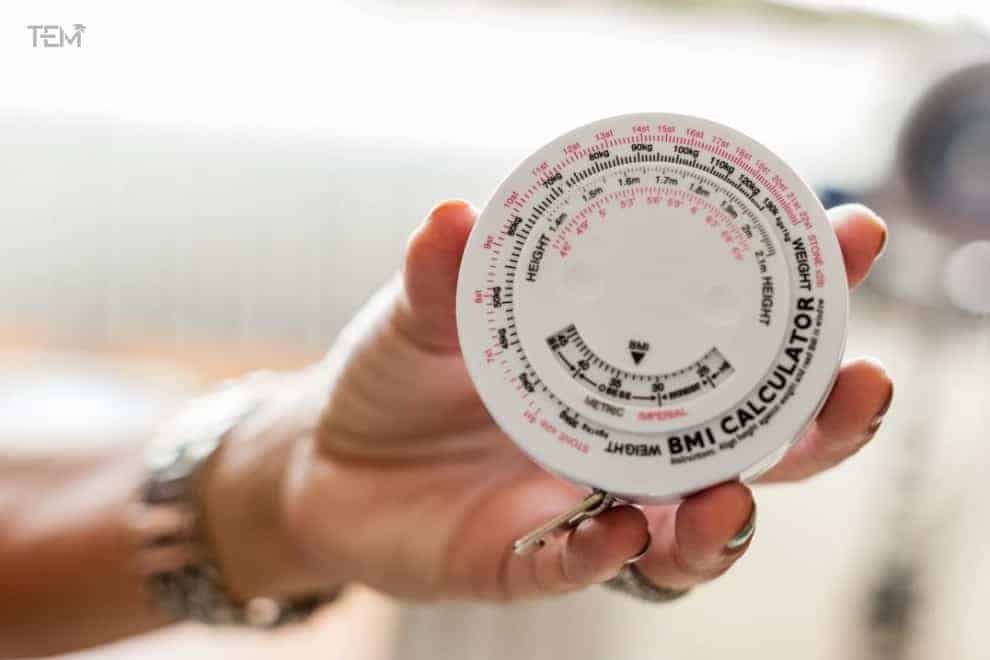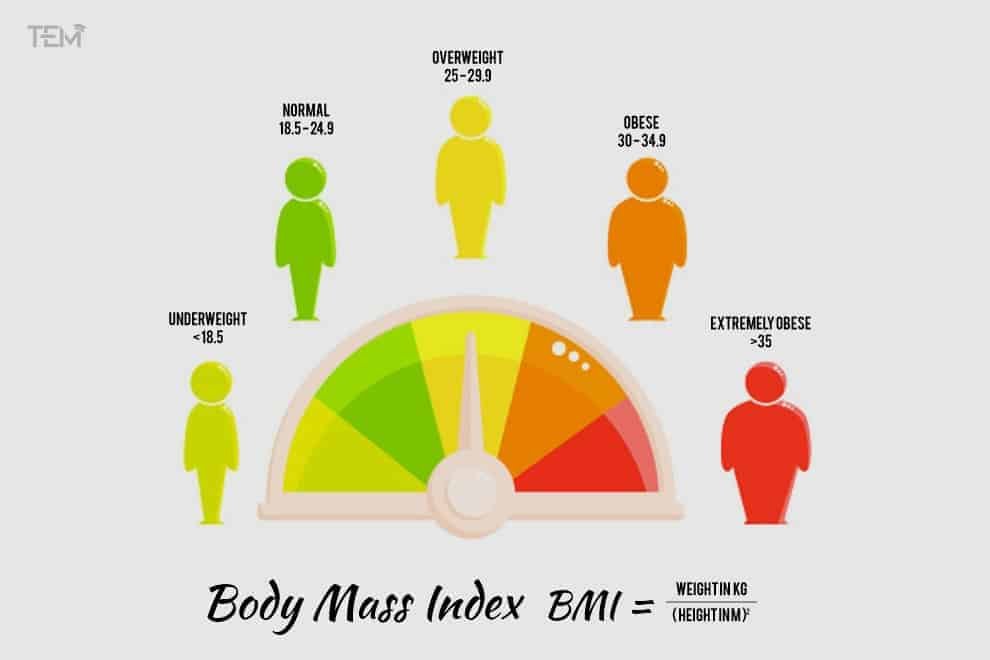Have you ever wondered how much fat consists in what part of your body? Certainly, fitness enthusiasts are aware of it courtesy of health consciousness and learning about their bodies. By calculating their (BMI) Body Mass Index, these fitness fanatics are aware of how much fat is located in different regions of the body.
Knowing your BMI can help you analyze and change your weight. It is not the most exact approach to determine your body fat percentage, but it is the simplest and least expensive method. Depending on the measurements you’ve collected, you can calculate your BMI in a variety of methods. In this blog, we will learn in-depth about BMI.
What exactly is Body Mass Index?

Body mass index is a medical screening tool that calculates your body fat percentage by dividing weight in kilograms by height in meters square.
In most circumstances, BMI is related to body fat—the higher the score, the more body fat you may have—but it is not always correct. BMI does not alone diagnose health. Healthcare practitioners analyze someone’s health state and hazards using BMI and other tools and tests.
A healthy BMI is considered to be between 18.5 and 24.9. It’s crucial to realize that body fat isn’t the sole factor that influences overall health. Other variables, such as heredity, exercise level, smoking or using tobacco, drinking alcohol, and mental health disorders, all impact your general health and your probability of getting specific medical conditions.
BMI Screening for Health Concerns

If your Body mass index is less than 18.5 (underweight), you are more likely to have the following conditions:
- Malnutrition
- Anemia
- The weakened immune system could lead to more frequent infections and illnesses
- Osteoporosis
- Infertility
If you are underweight, your doctor will most likely request blood tests and other tests to assess your general health and discover if you are malnourished. In general, the higher your BMI, the more likely you are to have the following conditions:
- Cardiovascular disease
- Blood pressure is high (hypertension).
- Diabetes type 2.
- Gallstones.
- Osteoarthritis.
- Apnea when sleeping.
- Cancers such as colon, breast, endometrial, and gallbladder.
- Depression and other mental health problems
It’s crucial to realize that you can have any of the illnesses listed above without having a high body mass index. You might also have a high BMI without having any of these disorders. Genetics and other variables, such as cigarette smoking, have a significant influence in the development of many disorders.
If your BMI indicates that you may be obese, your doctor will most likely prescribe blood tests to assess your overall health, such as a thorough metabolic panel and lipid panel.
How to calculate BMI?

The BMI calculator uses these formulas for BMI calculations:
BMI = weight ÷ height²
- In metric units: BMI = weight (kg) ÷ height² (meters)
- In US units: BMI = weight (lb) ÷ height² (inches) * 703
If a person weighs 65 kg and is 165 cm (1.65 m) tall, their BMI is calculated as 65/ (1.65)² = 23.87 kg/m², which shows that they are considered being of a healthy weight and have a BMI of this value.
What are BMI’s limitations?
For a variety of reasons, the traditional BMI chart has limits. As a result, it’s critical not to place too much focus on your body mass index.
Despite the fact that the BMI chart can be erroneous for certain people, healthcare practitioners still use it since it is the quickest tool for estimating a person’s estimated body fat percentage.
The conventional BMI has limits when it comes to assessing weight types, such as:
- BMI does not distinguish between lean body mass (the weight of everything but fat in your body) and fat mass. As a result, a person with a high BMI (due to muscle mass) might have a very low-fat mass and vice versa.
- Adults assigned male at birth (AMAB) and adults assigned female at birth (AFAB) utilize the same BMI chart, despite the fact that adults AFAB often have more body fat than adults AMAB.
- The BMI table has not been updated to account for the growing average adult height over time.
The typical body mass index chart should not be used to determine the amount of body fat in the following populations:
- Athletes and bodybuilders.
- Children and teenagers.
- Pregnant people.
- People over the age of 65.
Limitations of a Screening Tool
The BMI has certain drawbacks as a screening tool for determining the risk of specific health disorders, such as Type 2 diabetes and heart disease, including:
- The BMI does not account for the distribution or location of body fat. This is a problem because excess fat storage in specific places of your body, such as your abdomen, is linked to a higher risk of health problems than excess fat accumulation in other areas of your body, such as your thighs.
- Family history of diabetes, high blood pressure, cardiovascular disease, and high cholesterol (dyslipidemia); familial length (average lifespan); or family history of cancer is sometimes overlooked in the link between BMI and mortality rate.
Takeaway
To conclude, calculating body mass index can give you a slight overview of the fat proportion in your body. It is a tool that is a good precautionary practice and can help you stay health conscious. However, BMI is not always an accurate assessment of body fatness and is not the only determinant of your overall health.
ALSO READ: The Game Changers’ Documentary Dispels The Meat Protein Myth










